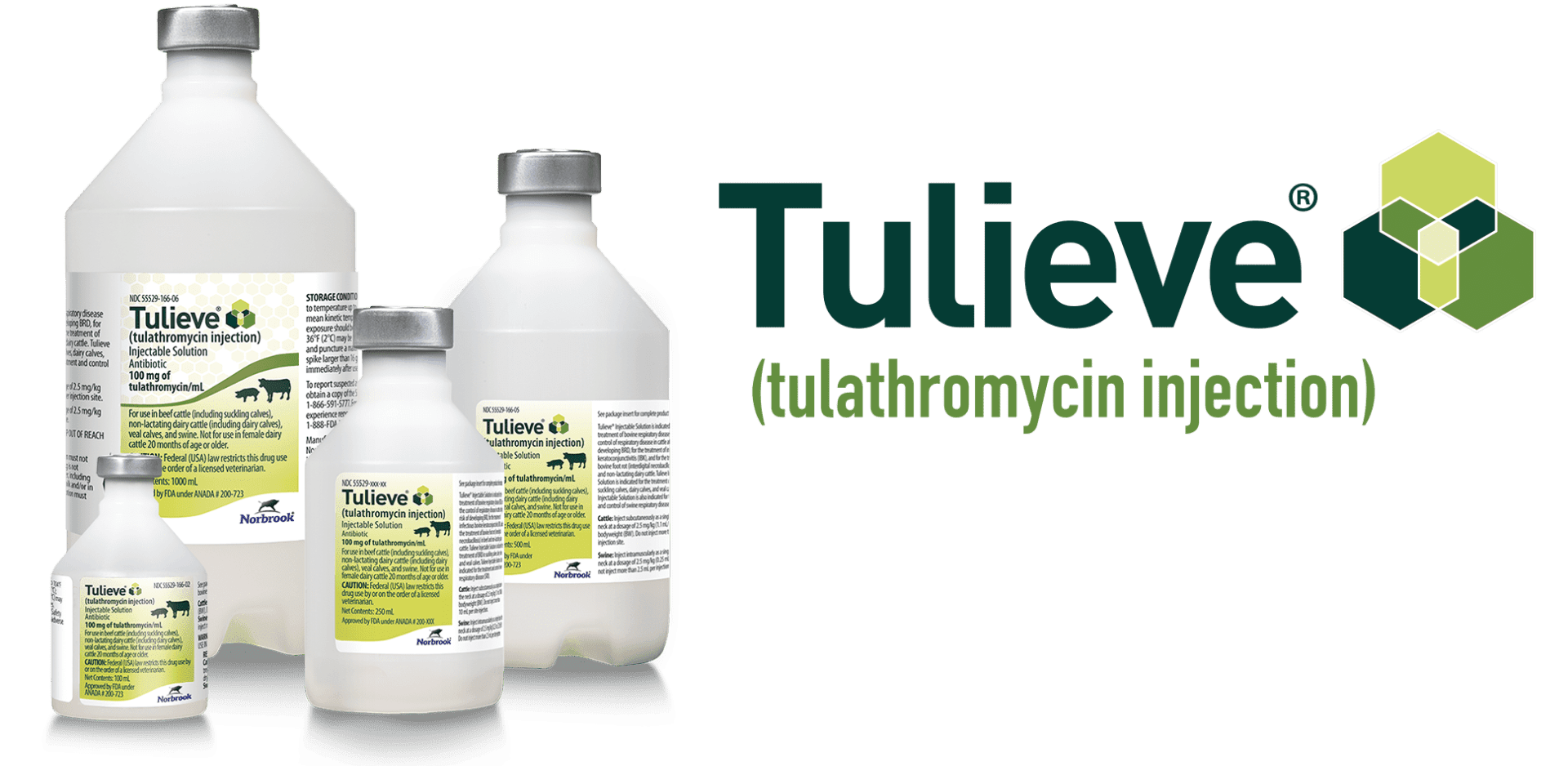
By Patti Wilson Contributing Editor
Cattlemen have another tool in the box for treatment against a broad spectrum of bacterial pathogens. Dr. Eric Moore, Director of Technical Services for Norbrook, spoke with me at length about their new product, Tulieve. It is a macrolide, meaning an antibacterial that inhibits protein synthesis in both gram-positive and gram-negative bacteria.
Tulieve is proven effective in treatment of many respiratory diseases in cattle. He described the drug as being administered in a low-dose, single injection. It is long lasting, readily absorbed and has an 18-day withdrawal.
Keeping All the Bases Covered
With the addition of Tulieve, Norbrook now has five classes of antibiotics available to cattle producers. Tulieve comes with several advantages. It is packaged in plastic bottle, greatly reducing the possibility of breakage. It comes in four options: Exclusive (one liter), 500 mL (both come in hanger bottles), 250 mL and 100 mL. It is the only generic tulathromycin that is available in plastic.
Some Good Advice

Moore offered some very sound council during our visit. He said the No. 1 priority for every cattleman and for Norbrook is to prevent the need for antibiotics. The second is to provide effective antibiotics when needed.
A great piece of advice was to develop a comprehensive preventative program. Gather as much information about the vaccines available and seek guidance from your animal health professional to assure you are implementing the best program available. This will assure that the products purchased are compatible to help avoid unpleasant repercussions from using vaccines that are not made for simultaneous administration.
Norbrook manufactures only FDA-approved products (antibiotics, anti-parasiticides and anti-inflammatories) and does not make vaccines. It has no conflict with any companies who provide vaccines or vaccination programs. He also recommends uncoupling your prevention and treatment programs; if you have a good disease-prevention program, you shouldn’t need to bundle you treatment program with it.
Moore described Norbrook’s products as “generic.” The product line is packaged more conveniently and is more affordable than the original antibiotics. He reminds us that there are no new classes of antimicrobials coming down the line. Norbrook, carrying all five classes available, can provide all your drug needs as well as competent representatives to advise as needed.
Moore’s final thought was that Norbrook will continue to bring products that are useful to producers and the industry.







